In my continuing capacity as STH’s dedicated reviewer of highly niche products, today I am looking at another ICY DOCK enclosure in the MB902SPR-B. This is a 5.25″ bay adapter that provides two hot-swap 2.5″ SATA bays. The unique feature of this enclosure is the built-in hardware RAID 1 functionality, providing driverless disk redundancy.
ICY DOCK ToughArmor RAID MB902SPR-B Overview
These product names are getting quite long, so for the the purposes of this review I am simply going to call this the ToughArmor RAID or the MB902SPR-B. Like the previous ICY DOCK products I have reviewed, the ToughArmor RAID is a substantial, all-metal design.
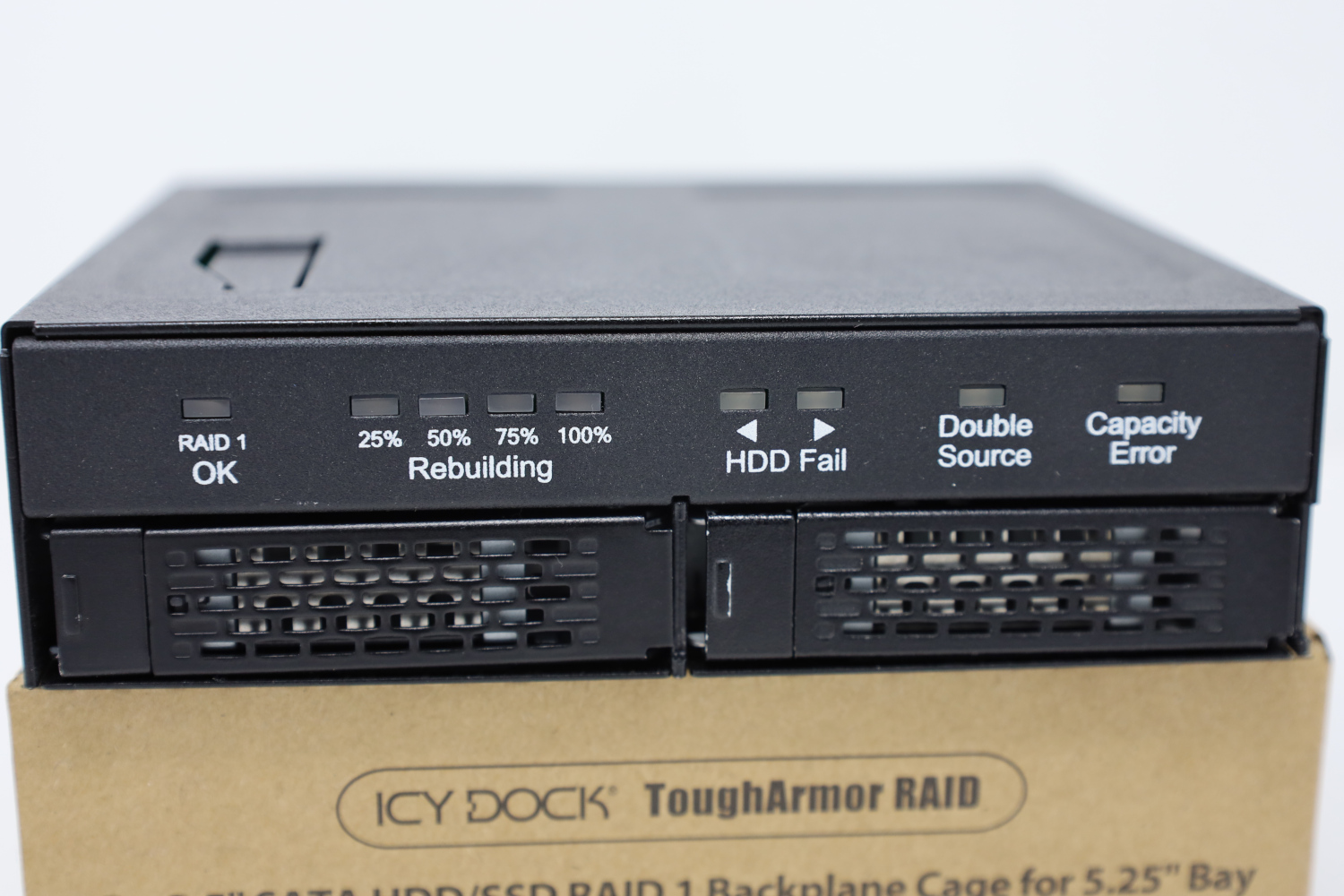
The front of the MB902SPR-B is where most of the action happens, with the dual 2.5″ SATA SSD sleds featuring prominently. Above them is an entire array of indicator LEDs, which provide the current status of the array if it is healthy, failed, or in the middle of a rebuild. Additionally, there is a light labeled Double Source if the controller chip detects two disks inserted but is unable to determine which one should be used as the source for a RAID rebuild. Lastly, there is a Capacity Error indicator, which as the name implies will light up if the target disk for a RAID rebuild is smaller than the source disk.
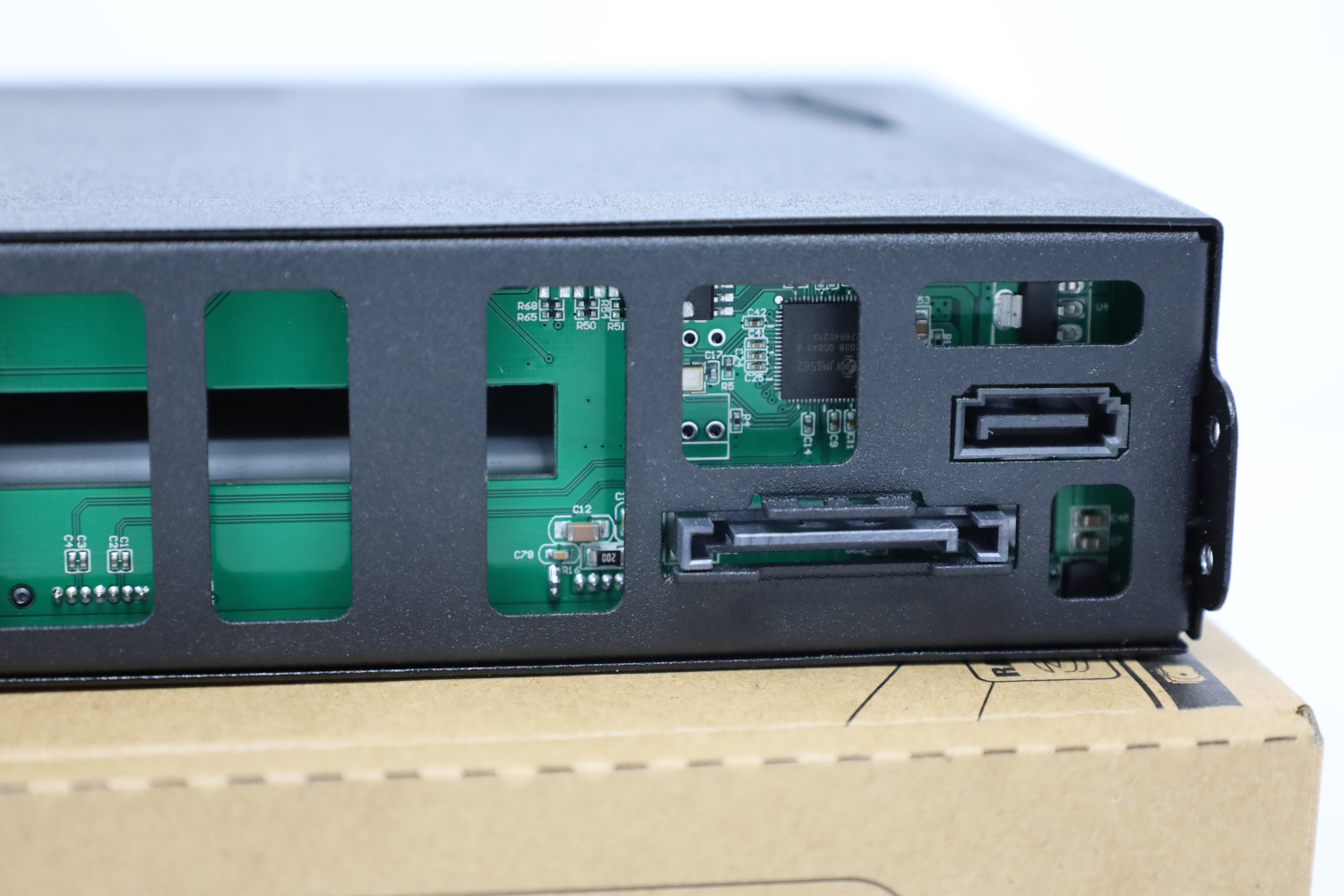
Around the rear of the enclosure, things are very simple; there is a single power connector, as well as a single data connector. From a data perspective, this is interesting, since the presence or topology of the underlying RAID array is hidden from the rest of the system; the MB902SPR-B presents itself as a single disk. This approach has some downsides which we will get into later, but it has a massive upside in terms of compatibility. In theory, this device will work anywhere a single SATA drive will work.
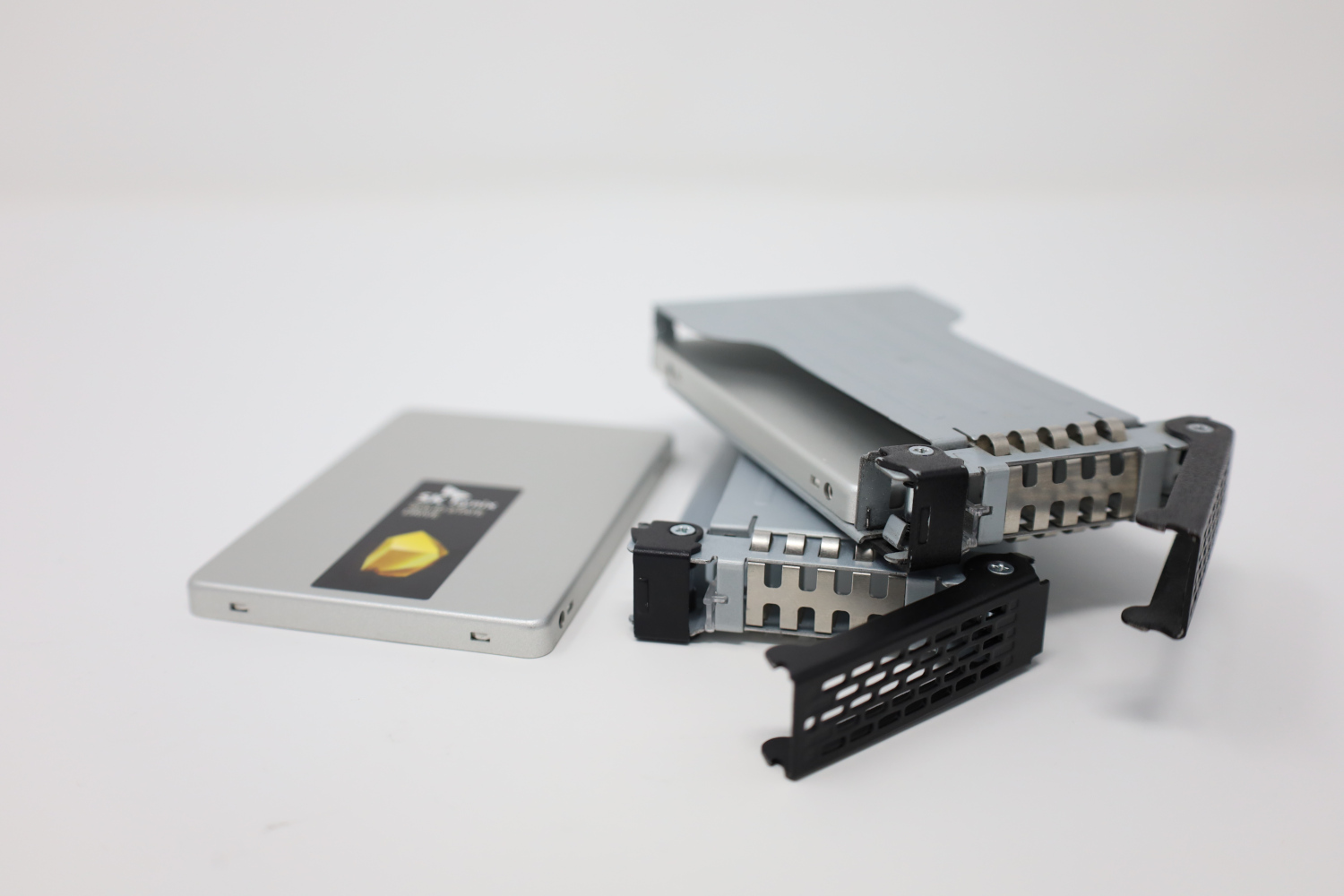
The drive sleds on the MB902SPR-B are designed to accommodate 2.5″ drives from 5mm to 15mm in height. Like the rest of the enclosure, these are metal. Unlike the previous ICY DOCK products I have looked at they are not tool-less. Drives are attached to trays via four screws into the underside of the drives. For this review, we used a pair of SK hynix Gold S31 500GB SATA SSDs, but there is plenty of clearance for taller drives. The retention mechanism in the enclosure has a solid feel to it and gives the impression the drives are very securely held in place.
Specs and Internal
ICY DOCK provides a spec sheet for the ToughArmor RAID MB902SPR-B, copied here:
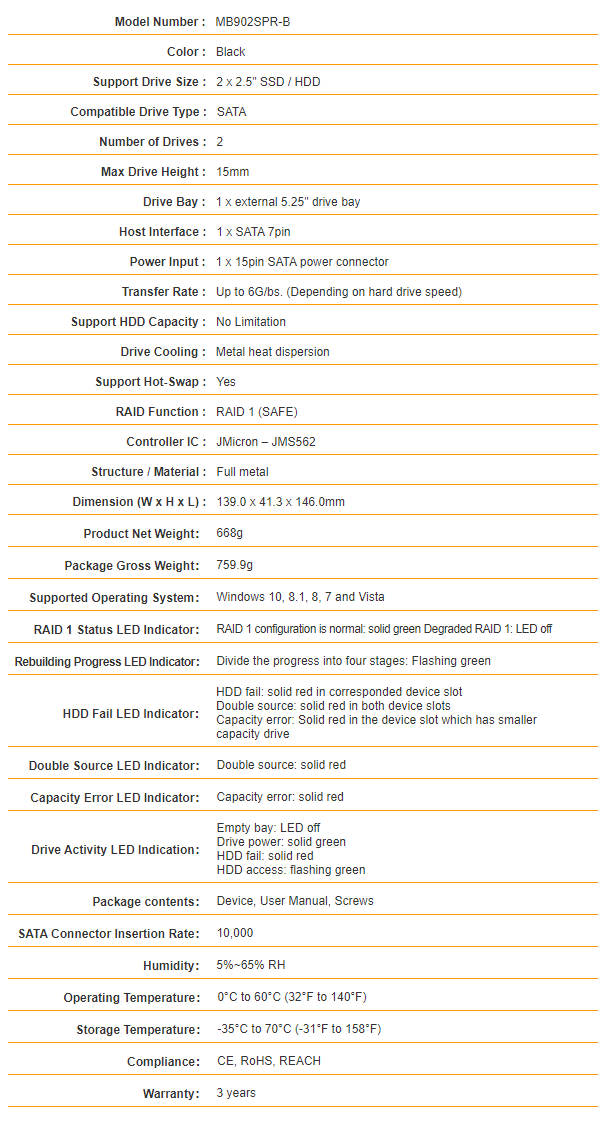
Inspection of the internals of this device reveals a JMicron JMS562 controller chip. This versatile little controller chip is found in everything from multi-mSATA adapter cards to external USB enclosures.
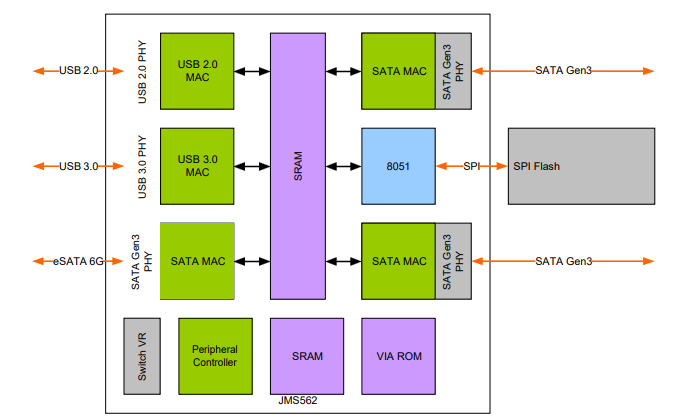
While the JMS562 is capable of operating in RAID 0, 1, or JBOD mode the ToughArmor RAID is hardcoded to RAID 1. One downside to the JMS562 is that it is not particularly fast, which we will cover in just a moment.
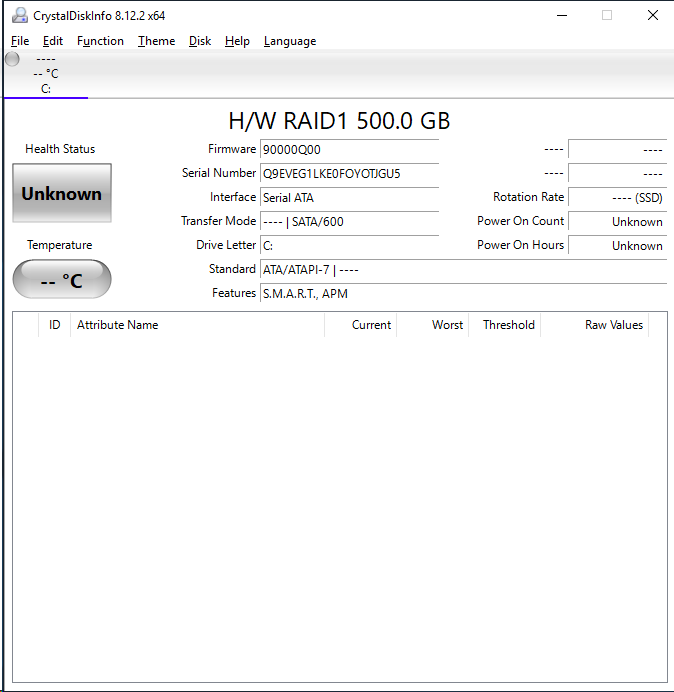
As you can see, CrystalDiskInfo has absolutely no clue what is going on when using the MB902SPR-B.
Performance
The JMS562 controller sits between the drives installed in the MB902SPR-B and the rest of the system. The resulting performance of the drives and the array thus becomes more about the performance of the JMS562 chip than the underlying drives. As mentioned earlier, we are testing using some SK hynix Gold S31 500GB SSDs, so once my operating system was installed and humming along I fired off a quick CrystalDiskMark to see how things were running.
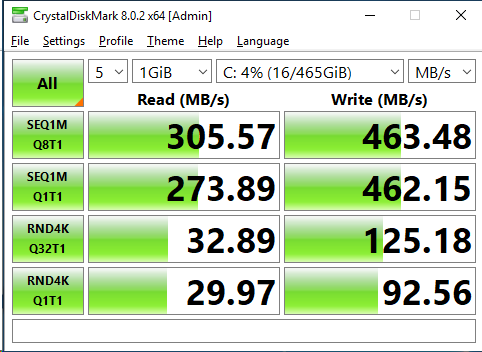
Performance did not exactly blow my socks off. Prior to this, I had not yet actually benchmarked one of these S31 drives on their own yet, so I powered down the system and attached one of the S31 drives directly to the motherboard instead of through the enclosure. The system booted right up (thanks to RAID 1!) and I re-ran the CDM test on the same drive without the RAID 1 enclosure.
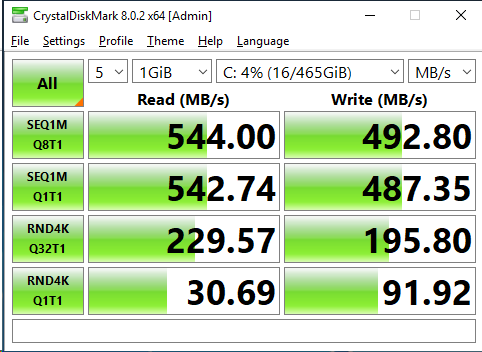
There is a significant performance penalty incurred by placing the S31 drives behind the JMS562 controller. Not only are peak sequential transfers slowed, but highly threaded random traffic is impacted to an even higher degree. Upon reading the JMS562 datasheet, the JMS562 performance is quoted at “above 400M bytes per second” which is well below the limits of SATA 6 Gb/s. With all of that said, I suspect that buyers interested in the MB902SPR-B have RAID mirroring as a primary concern and not performance, but it is still worthwhile noting the cost of that redundancy.
Does the RAID mirror work?
In a word, yes. Once the test system was booted back up, I tested the RAID mirror by yanking a drive out of the enclosure in the middle of a data copy. Windows never even realized anything had happened and the data copy continued and finished successfully. I reinserted the drive, and a short while later the RAID rebuild progress bar had filled up and my RAID 1 normal LED was lit back up. I pulled the other drive for my next test, and things worked just as well the second time around. The underlying operating system was completely ignorant and just kept humming along. RAID 1 mirroring is the feature for this enclosure, and it is good to see that it works exactly as advertised.
There is a ‘but’ coming…
There was always going to be a ‘but’ coming, and in my opinion, it is a big one. Let us take a look at that CrystalDiskInfo shot one more time:

As I mentioned, CrystalDiskInfo cannot see what is happening with the drives in the enclosure. In addition, I stated that when you pull a drive from the MB902SPR-B that the underlying OS does not even notice it happened. Both of those things are true but added together they actually represent a challenge.
The one and only permanent indicator as to the health of the array in the MB902SPR-B are the lights on the front. There is no auditory beeper, and while there is management software that can be installed, it does not stay resident.
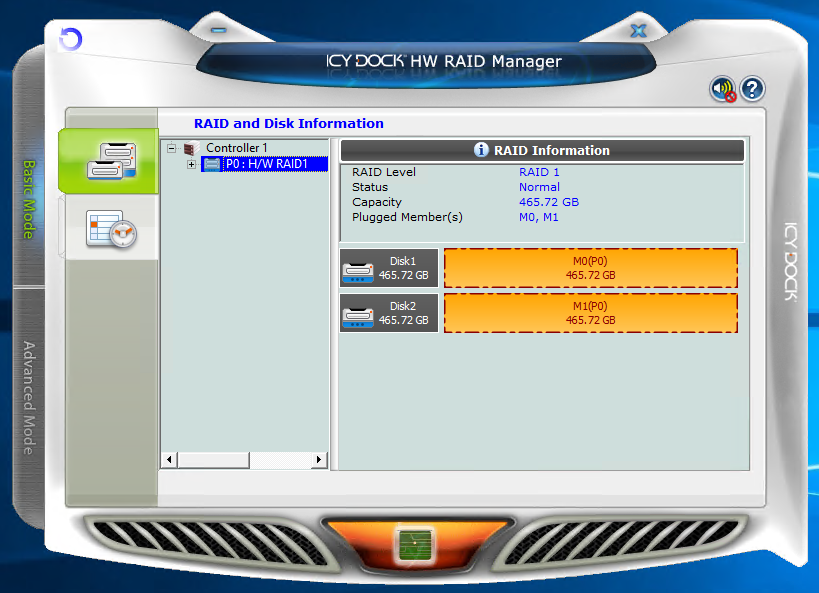
This utility is essentially read-only, and while it does claim SMTP alerting capability (which I verified does work) the software runs interactively and does not persist upon a reboot; as a result, it cannot send alerts if it is not running. One would have to find a way to script running the utility at launch, a way to check and restart the utility if it stopped running, and so forth to have this work as a normal server service. If the MB902SPR-B is installed in a server and then that server is installed in a rack or server room somewhere out of sight, this situation is not ideal since without direct interaction MB902SPR-B users will be ignorant as to the health of the RAID array.
In addition, with all of the SMART data hidden away enabling things like predictive drive failure alerting becomes nearly impossible. I say nearly because when I reached out to ICY DOCK about this challenge, they provided me a command-line utility that can pull SMART data from the underlying drives behind the JMicron RAID controller.
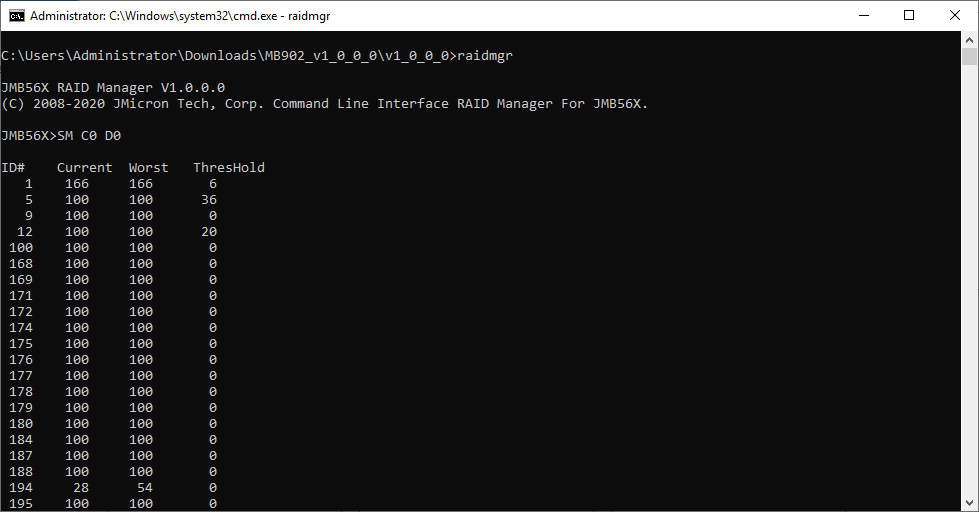
This data is also viewable on the GUI software. So while it is technically possible to retrieve this data, there would be a potentially significant integration challenge to pull this SMART data and integrate it into a monitoring solution. The command-line software is also only available from ICY DOCK on a by-request basis and also includes RAID function commands. On one hand, the data is available but this is another level of effort versus a software RAID solution or a traditional RAID controller solution.
To the future!
I spent just a while complaining, and mostly I do that because I really want to like the ICY DOCK ToughArmor RAID MB902SPR-B. I think it is a great idea, and I would hope for a version 2 with some improved functionality in the future. Perhaps some kind of side-band USB interface for management and alerting could be implemented or at minimum a really loud beeper alarm.
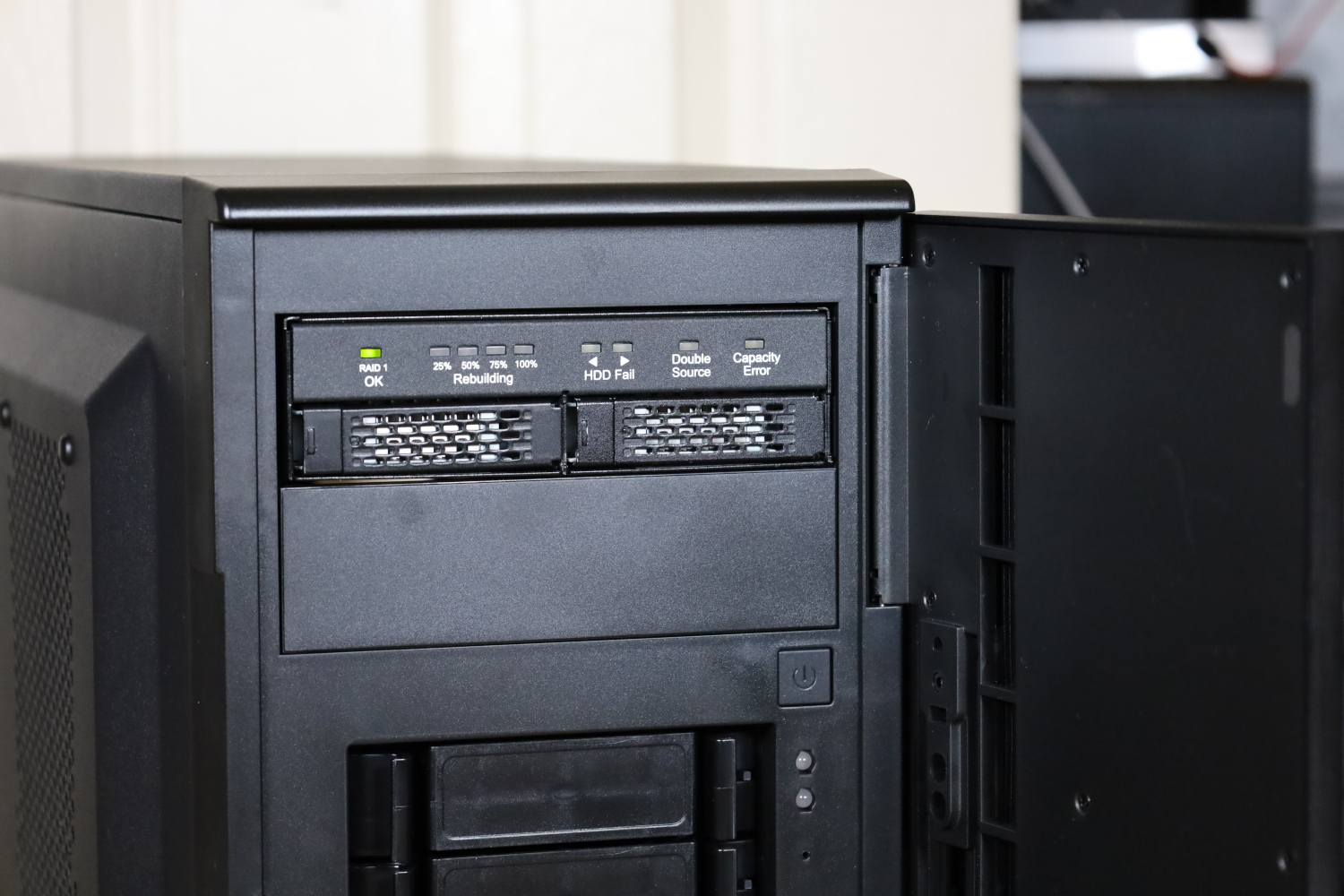
As it stands, the MB902SPR-B strikes me as more of a workstation or ‘test lab’ kind of product more than a ‘production server environment’ solution. If you are installing the MB902SPR-B in a system that you can easily put eyeballs on with regularity, the challenge with the lack of alerting on drive failure mostly goes away. Performance is still a concern, but there are plenty of situations where this level of performance would be fine and besides, folks still using SATA probably are not doing so for performance applications. For a boot drive, as an example, this is an easy way to have a RAID 1 solution while not having to deal with how the solution integrates with the OS.
There are many different types of environments and applications out there so we just wanted to give a view of what this solution can and cannot do.

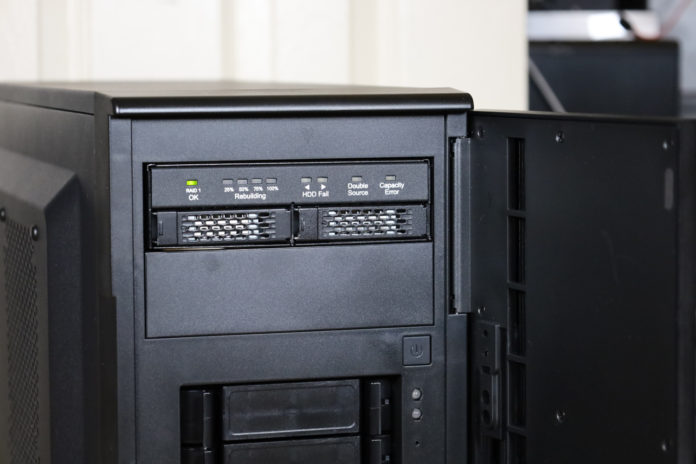


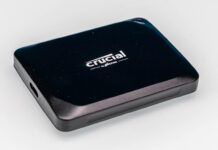
I don’t think anyone installing such a RAID device in a data center would have trouble connecting up a command line utility that reports the state of the array to nagios or similar.
Does the ToughArmor RAID pass fstrim commands through to the SSDs? In my opinion a RAID that does not track fstrim and instead mirrors empty drives is unsuitable for SSDs.
It would also be interesting to know the power-loss characteristics of the RAID. Does it have any built-in protection?
Can this make copies of a disk even if there is no data cable connected? That would be an interesting use case.
Eric,
TRIM is unsupported.
Chris,
It does not seem so. The unit powers up with no data cable connected, but does not seem to start ‘doing’ anything unless Data is also connected.
I see no use for this device, who uses RAID these days?
There is a commercial HDD/SMART monitoring utility (HD sentinel) that claims to be compatible with the JMicron chip used here, and it is much nicer than that thing. Has autostart, email alerts, etc.
So it appears that one is not forced to use the vendor software, but having to buy third party software is not that ideal.
With meh performance, not being tool-less, and the {potentially fixable} management limitations, it was likely a mistake for ID to brand this thing a “RAID”. But it has an application, which is elevated-confidence backup. It makes two copies of whatever is written to it, and minds the drives for faults.
That the individual drives are directly mountable is a feature. It {nearly} entirely eliminates nightmare failure:recovery scenarios involving the controller itself, which is a consideration with many actual RAIDs.
Modprobe,
I was unaware of that claimed compatibility, but the JMS562 is indeed on their list. I would wager it would work, though my test setup is now otherwise occupied so I cannot verify myself.
Bob,
I think it can still call itself a RAID, and fundamentally it does exactly what it says on the box – it makes a RAID 1 mirror of two hard drives. It never promises alerting, nor TRIM support, nor anything else. In that sense the product is successful; it is just that if there is ever a version 2 I want more than just the RAID 1 support.
Nice to see a review after I have purchased the ToughArmor Raid. So far it is alright, a little bit confusing at first but made it through. I like it but I certainly don’t need rugged housing for personal usage at home.